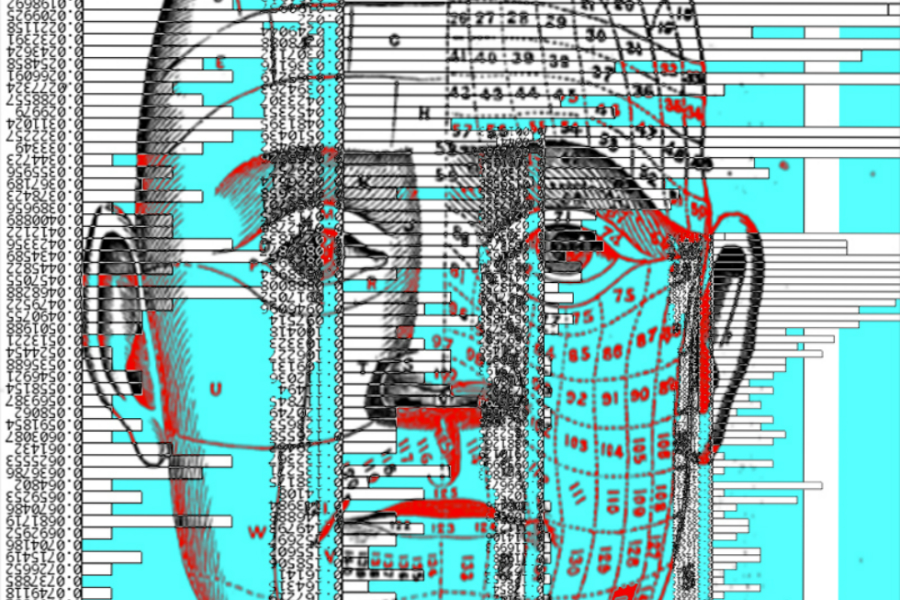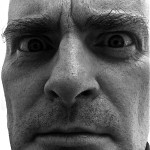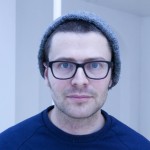The Seditious Potential Of The Smile: Me_asure

Ahead of their commission launch and artist talk at FACT tonight, we catch up with Culture Lab’s Tom Schofield and John Bowers about the dangers of categorising people, tech politics and Big Brother…
Your new interactive artwork, me_asure, is able to read our faces and tells us things about who we are… Can you explain more about what type of information it will know? How can it predict these things?
John Bowers: me_asure brings together 21st century face recognition and measurement techniques with 19th century writings on physiognomy, the attempt to read mental ‘faculties’ from an analysis of the face, much like phrenology analyses the overall shape of the skull.
Tom Schofield: me_asure is based on live measurement of the face using computer vision. We see analogies, more than analogies actually, between contemporary analytical techniques and their historical forebears.
JB: We are interested in staging this clash of the old and the new, using digital media to bring out the fact that people have long been obsessed with the idea that the face reveals the nature of the person — whether we are talking about 19th century speculations by men of learning, or 21st century applications for national security purposes, or attempts like Tesco’s recent trials of face analysis to deliver people age and gender-targeted advertising.
What categories are you using and why?
JB: We take various measurements of facial features and relate these directly into 19th century physiognomy. In particular, we have been using a text by a J. W. Redfield, MD, published in 1848. He’s our third collaborator on this project. We can make approximations to 48 of his mental faculties.
These faculties are sometimes charmingly quaint. He thinks for example that we have a faculty called ‘Love Of Climbing’. Other times they manifest the kind of gendered, nationalist and racial prejudices we might expect from a 19th century colonial text. Yet other times, they relate to more abstract ideas about mental functioning. So there is a variety of categories we can read into the face: from the capability for abstract reasoning, through the capacity for religious devotion, to a tolerance for hard work.
TS: What’s fascinating about Redfield’s work, and that of his contemporaries, is that there is a kind of holism, a strong desire to integrate science with religion, medicine, and ethics (however questionable those may be in a contemporary context). There is also a degree of self-awareness about the difficulty of such a task. A measure (excuse the pun) of such self-awareness might benefit some of the more disturbing applications of computer vision.
What has me_asure been saying about you so far?!
JB: Time and time again it says that we have the faces of accomplished artists, albeit ones with a high sense of self-importance [laughs]. More seriously, we intend this piece to pose a number of questions about the validity of such approaches, be they Victorian or contemporary, and to point to our apparent need to see ourselves reflected back as a certain sort of person, and measurably so.
- John Bowers
- Tom Schofield
TS: What surprised me is that the more the work developed, the more I started to give credence to the categories applied to me, despite the fact that the work is, of course, intended as a critique of the idea that you can categorise people. In that sense, what is says about me is that I’m very, very impressionable.
How does me_asure link to your work on a whole? What themes do you tend to explore as digital artists?
JB: I am not straightforwardly a digital artist. I am interested in how the digital interworks with other media and materials and am very attracted to historical pieces to bring these issues out. I often work as a sound artist and music improvisor, and one of my ongoing projects I call The Victorian Synthesiser. It’s an attempt to make a minimalist electronic musical instrument using techniques which were known to the Victorians, so it’s not a digital project in terms of the materials it is made from. However, that I am doing this now, and that I perform with The Victorian Synthesiser alongside laptops and other digital paraphernalia is an attempt to raise the questions about these different media and materials and how they can be rubbed up against one another.
Me_asure very much sits in this space of different media, with linkages in to the history of science, and offers a gentle nudge to think about these topics politically. me_asure has also become a bit of a literary project. We have become fascinated with the literary character of the language used by the physiognomists and phrenologists we have studied, and me_asure does some modest graphical experiments with the presentation of text drawn from Redfield’s work. I think these are concerns that I share with Tom and this is the first of a number of collaborations we plan along those lines.
TS: Like John, I tend not to describe myself as a digital artist for a couple of reasons. First, because I’m keen to blur the distinction between art practice and certain kinds of design. Second, because a lot of the things I think are interesting about contemporary technology very much bridge the gap between analogue and digital, indeed are about that gap. I’m thinking for example of the development of encoding techniques in the history of the optical and electrical telegraph. These were the subject of a previous work, Null by Morse.
What’s your view on facial recognition being used to invade our privacy? What potential does this technology have do you think?
JB: I think it is important that we address privacy and other political questions around technology by getting inside how these technologies are made. Once we accept that these things just exist and we worry about their ‘implications’ the battle has already been half lost.
TS: For me, the most unpleasant thing about surveillance of all kinds is the fact that it’s so one-sided. As John describes, a lot of the motivation for my own art and design practice comes from being dissatisfied with a one-sided view of technological innovation.
JB: For me, politics should get inside making. Once you know a bit more about how things work, you can explore a richer strategy for resistance, ones which can bring in a kind of joyful insurrection. Just as how you can allegedly fool a lie detector by curling your toes, working on me_asure has made me consider the seditious potential of the smile, the wink and the beard.
Laura Robertson
See Tom Schofiled and John Bowers present me_asure tonight 7pm, Friday 16 May, at FACT Liverpool (big screen in foyer). Part of Light Night 2014 (full programme here)
me_asure has been specially commissioned for Light Night 2014 by The Double Negative, FACT and Syndrome. With special thanks to Nathan Jones
More of Tom’s work on his website here and on Twitter @tomschofield
More of John’s work on his website here and on Twitter @johnmbowers







